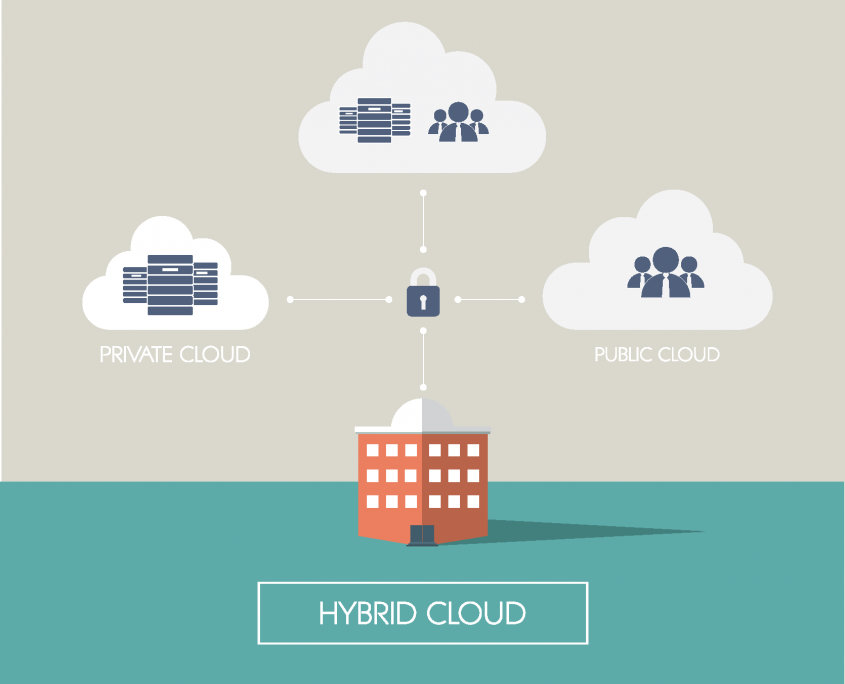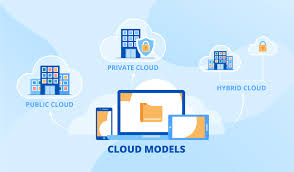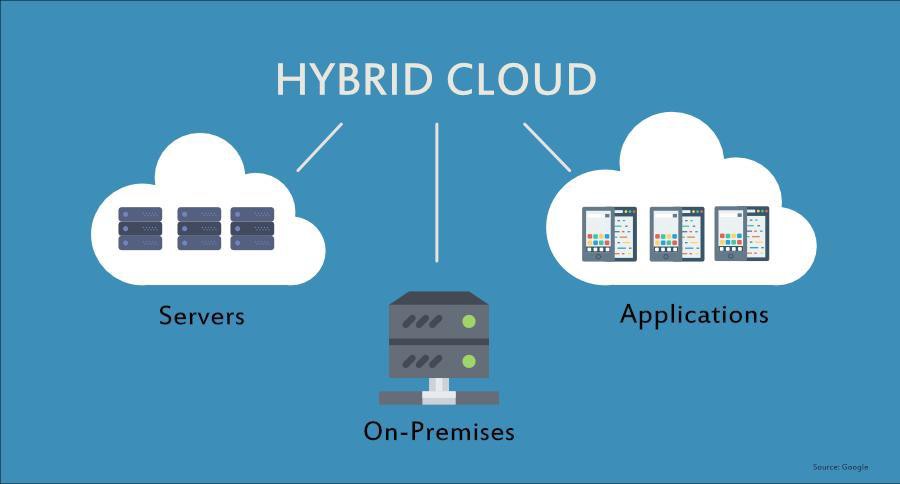Hello!
 Cloud computing is a technological revolution in progress also continues to be emerging as among the most dependable avenues for company creation. Facilitating companies to be more nimble and responsive to the energetic requirements and chances; cloud computing propels productivity increase and widens profit margins. Hybrid cloud options would be the future of business IT.
Cloud computing is a technological revolution in progress also continues to be emerging as among the most dependable avenues for company creation. Facilitating companies to be more nimble and responsive to the energetic requirements and chances; cloud computing propels productivity increase and widens profit margins. Hybrid cloud options would be the future of business IT.
The adoption of disruptive technologies is progressing in this age of computing. It’s apparent that firms are unlocking new sources of productivity, cooperation, flexibility, and functionality improvement.
From on-demand network accessibility to scalability and increased safety, the true value of cloud computing catapults ventures to a new dimension of competitiveness. Cloud computing will alter how organizations approach operational difficulties.
Cloud alternatives will unite with another wave of smart technology.
Cloud computing solutions are becoming the new standard for ventures. The newest Gartner report points to how this distinguished technology will continue to create headway in the technological arena.
As we look forward, it’s apparent that some definitive tendencies are drifting about cloud computing. Hybrid cloud is supposed to be a symbol of the new standard of business computing. We’re solving the binary paradigm of cloud computing infrastructure by leveraging the best of the two worlds. As we see, the hybrid strategy is poised to dominate the entire business moving forward.
What is Hybrid Cloud Computing?
 “Article of a couple of different cloud infrastructures (personal, community, or people ) that stay unique entities, but are bound together by proprietary or standardized technology that permits application and data portability.”
“Article of a couple of different cloud infrastructures (personal, community, or people ) that stay unique entities, but are bound together by proprietary or standardized technology that permits application and data portability.”
Every hybrid model differs in its own structure and design, since it’s invented to satisfy the distinctive needs of a venture.
Hybrid cloud is an entire cloud option which may be leveraged to unite the high-security characteristics of personal cloud. The easy-to-access characteristics of people cloud is indeed it caters to a wide assortment of use cases and complex installation situations.
Leveraging either side of the equation, a hybrid infrastructure generates a unified, automatic, and well-maintained computing environment for company. The well-maintained surroundings would ensure increased flexibility in transferring workloads between distinct cloud options in line with the dynamic requirements and changing prices.
Why Hybrid Cloud?
 Architecting a hybrid enables organizations to exploit the advantages of private and public cloud deployments simultaneously. But, its primary value lies in easing digital business transformation by gaining agility.
Architecting a hybrid enables organizations to exploit the advantages of private and public cloud deployments simultaneously. But, its primary value lies in easing digital business transformation by gaining agility.
Organizations often find it hard to select between deploying software on-premises and people cloud.
Typically, businesses continue to keep their information centers for ensuring compliance, security, and operational management. Nevertheless, partnerships are always needing more funds.
As an example, your company may require extra storage and computing resources to satisfy the occasional need spike. Then the company can scale back into the initial in-house servers if demand subsides.
Restricting your own cloud computing infrastructure into the bounds of your personal data centers does not seem a sensible option. Requirement on company resources as well as the lagtime this generates will demand public cloud support to get as many tools as required.
Incorporating public cloud support in your existing IT plan not only ensures that an inexpensive solution for processing high-volume info spikes but also aids in preventing costly downtime.
Top Use Cases of Hybrid Cloud.
 As we take a look at a few of the highest advantages of hybrid solutions, the response to”why select hybrid ” becomes well-defined. Hybrid cloud supplies the very best disaster recovery option alongside an easily-accessible private infrastructure.
As we take a look at a few of the highest advantages of hybrid solutions, the response to”why select hybrid ” becomes well-defined. Hybrid cloud supplies the very best disaster recovery option alongside an easily-accessible private infrastructure.
Deploying a hybrid solution enables an enterprise to select their software, information, and tools which may be set in the public cloud or even a personal atmosphere. Typically, sensitive and critical information has been saved in a data centre, or personal cloud deployments, whereas a people cloud, will be used for significantly less insecure tools.
A resource which will enable businesses to reap the advantages of flexibility and speed of this cloud without needing to replace their whole IT infrastructure is fast becoming essential. What’s more, the cloud could be a disaster restoration approach having an efficient path to safeguard critical applications.
In the realm of IT infrastructure, endurance and agility is the demand of the hour. The hybrid approach enables enterprises with an unparalleled amount of flexibility.
Hybrid can optimize the usage of computing, computing, and media resources. Nurturing greater IT and business cooperation, a hybrid strategy generates an environment which may be scaled upward or down back as your business needs change and grow.
 Reducing your overall cost of ownership, hybrid provides the extra plus of being cheap. Disaster recovery alternatives, cloud bursting and many different attributes of hybrid environments enable businesses to reduce prices.
Reducing your overall cost of ownership, hybrid provides the extra plus of being cheap. Disaster recovery alternatives, cloud bursting and many different attributes of hybrid environments enable businesses to reduce prices.
Shifting the IT spending to hybrid cloud pay-as-you-go version reduces capital expenditures (CapEx) into a larger extent. Not just that this cloud system matches your price patterns to need routines, but also support present and future expansion seamlessly.
Increasing requirement for scalability, efficient productivity, and protected data access contributes to the expanding adoption of hybrid solutions. The increasing popularity of large data management applications, artificial intelligence (AI) and the Internet of Things (IoT) also functions as a growth catalyst.
As per a report released by Allied Market Research, “the worldwide hybrid market is estimated to reach $171,926 million by 2025, rising at a CAGR of 21.7percent from 2018 to 2025.”
The transformative role of Hybrid cloud.
 Hybrid cloud design simplifies the problems raised by numerous companies for embracing cloud. Regulatory compliance, information privacy, and authority requirements might need to be fulfilled. Firms of all scales and businesses can leverage hybrid solutions to deliver program data and services with each other to get a substantial foothold in the competitive industry.
Hybrid cloud design simplifies the problems raised by numerous companies for embracing cloud. Regulatory compliance, information privacy, and authority requirements might need to be fulfilled. Firms of all scales and businesses can leverage hybrid solutions to deliver program data and services with each other to get a substantial foothold in the competitive industry.
Total operational consistency and easy workload reliability of hybrid strategies offer the flexibility and freedom to innovate faster and capture opportunities. Businesses operating in finance, health care, and legal businesses feature particular regulatory demands and data management criteria.
Moreover, many services and applications in these businesses follow a heritage infrastructure being set up for decades. Assessing the present legacy system or restarting a whole application could be expensive and complex.
Hybrid strategies make it possible for businesses to avail the cheapest and advanced solutions without having a massive capital outlay of moving into a complete cloud atmosphere.
How to Implement?
Step one towards cloud computing lies in knowing the company value and use instances where hybrid can be leveraged. Many factors need to be taken under account when implementing a hybrid in almost any business.
 On the other hand, these seven measures are somewhat more universal for any cloud execution procedure:
On the other hand, these seven measures are somewhat more universal for any cloud execution procedure:
- Ascertain the cloud installation version for data and applications.
- Integrate with existing business services.
- Address connectivity demands.
- Create government policies and support arrangements.
- Evaluate and solve privacy and security challenges.
- Deal with the hybrid environment.
Organizations opting for a hybrid strategy can attain operational and financial benefits. You have to offer a strategy early for developing a thoughtful migration program.
Also read: – How To get free Online Cloud Storage
Challenges
 Hybrid computing is a valuable alternative that provides enhanced user experience, greater resiliency, and increased flexibility. Similar to every other emerging technology, it includes a reasonable share of issues and challenges.
Hybrid computing is a valuable alternative that provides enhanced user experience, greater resiliency, and increased flexibility. Similar to every other emerging technology, it includes a reasonable share of issues and challenges.
The best challenges faced by the associations comprise safety risks, compliance problems, integration complexity, elements partitioning, and scaling complications. On the other hand, the fantastic thing is that everyone these problems and issues can be medicated using a strategy.
Partnering with a managed service provider aids in making smarter decisions and mapping out an effective cloud strategy.
Conclusion
We can declare that the flexibility and flexibility of hybrid strategy will dominate the business moving forward. Since the hybrid adoption becomes mainstream, partnerships will need to comprehend its entire potential and handle the special complexities to derive its significant advantages.
Thank you!
Join us on social networks!
See you!






